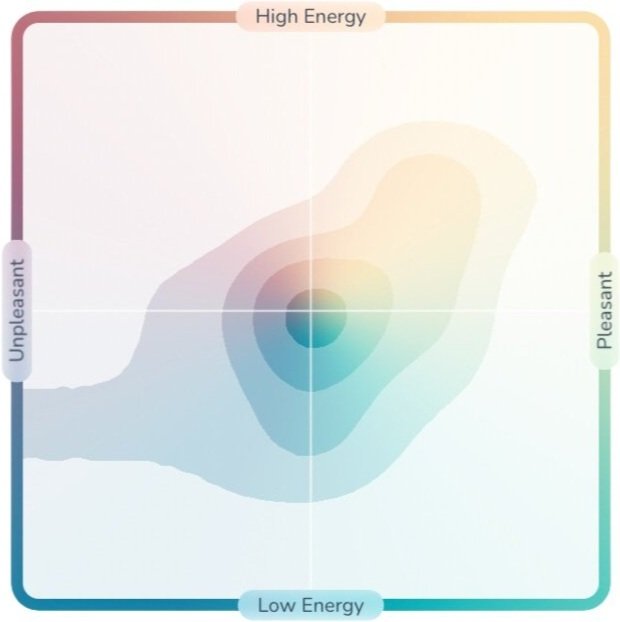How to respond to unpleasant emotions constructively

Our emotions exist for a reason. They’re signals from our bodies indicating whether something is right or wrong; they provide valuable data. Most of us find our emotions to be confusing, which is not surprising. After all, we live in a society that conditions us to ignore our inner feelings and instincts. That’s why here, we discuss how to reconnect with our true selves using self-awareness and how to respond constructively to unpleasant emotions.
So, what are emotions?
Emotions play a crucial role in our survival; they motivate us to act in a way that’s beneficial to our physical and mental health. For example, love creates a social connection, ensuring the survival of our species and fear acts as a protective mechanism, guarding against potential threats and keeping us safe.
Emotions highlight our needs, and recognizing them can help us get our needs met. Emotional needs are similar to our physical ones; when our body sends us signals that we’re cold, it acts as an indication for us to fulfill this need and grab a jacket. Similarly, emotions signal that we may need to adjust our environment, mindset, or relationships to achieve well-being.
Emotions exist for a reason. They’re signals from our bodies indicating whether something is right or wrong; they provide valuable data.
Unfortunately, many of us have been taught to hide or ignore our emotions, making it difficult to understand what our body is trying to say. That said, knowing how to name our emotions and talk about them — both with ourselves and others — is an integral part of emotional literacy.
Types of emotions
One way to understand and identify our emotions is through the emotional grid available on the Mindletic app. Based on this model, emotions can be categorized as high energy or low energy and as pleasant or unpleasant.
-
The low-energy, pleasant (dark blue) corner represents feelings such as calm, tranquility, relaxation, peace, and security.
-
The high-energy, unpleasant (mahogany) corner represents feelings like anger, shock, anxiety, and concern.
-
The low-energy, unpleasant (light blue) corner captures feelings such as sadness, disappointment, discouragement, depression, and loneliness.
-
The high-energy, pleasant (peach) corner represents feelings of happiness, excitement, cheerfulness, energization, and motivation.

Benefits of tracking our emotions
“By recognizing and tuning into our own emotions, we become more self-aware, and more mindful, which allows us to make informed decisions and respond to situations more effectively.” – Annie Miller.
If we’re feeling lonely and distant from people in our lives due to a hectic work schedule, knowing this we can actively reach out to our loved ones and take the necessary steps to reconnect. Or if we’re feeling anxious about a certain work task, we can address the issue, seek clarity, and ensure we have the support needed to complete the task.
There’s a wide spectrum of emotions we’re capable of experiencing. Unpleasant emotions, in particular, are the most challenging ones to navigate. Often, we just want them to go away and, as a result, end up engaging in actions we hope will help us reduce this psychological pain.
Destructive, constructive, and neutral responses to emotional situations
Destructive responses are actions that harm our physical or mental health. These are the behaviors that we may regret in the future. For example, one may turn to excessive eating, drinking, or smoking to cope with the feelings of exhaustion or frustration at work. While these actions provide temporary relief, they can worsen the initial distress, creating a cycle of shame and unhealthy coping mechanisms.
While we’re all human and occasional indulgence is understandable; destructive responses can derail our journey toward health, career, and personal goals over time.
Neutral responses are actions that neither significantly harm nor benefit our overall well-being. They are essentially a way of “treading water” emotionally. For instance, someone might choose to watch TV or scroll through social media as a way to distract from unpleasant feelings. While these activities aren’t inherently harmful like destructive responses, they don’t actively contribute to emotional growth or resolution either.
Consistently relying on neutral responses can result in stagnation. Instead of truly processing and dealing with emotions, we might find ourselves stuck in a loop of avoidance.
Constructive responses are those that effectively relieve emotional distress, promote physical or mental health, encourage personal growth, and help us build resilience. For instance, when faced with overwhelming sadness, one might choose to engage journaling or meaningful conversations with their loved ones. In fact, there are numerous constructive ways to address unpleasant emotions. These can include activities like exercise, meditation, reading, gardening, or spending time in nature.
Final thoughts
We all have our individual differences and unique methods of managing stress. The key here is to ask ourselves: “What helps me in moments of stress?” or “Which activities are most effective for me?” Note them down and revisit when tempted by unhelpful coping strategies. Being aware of your emotions and consciously applying your preferred constructive responses will help build emotional resilience over time.
The Mindletic app has a “track my emotions” feature, allowing users to monitor their feelings, review past data, and identify specific events that may have caused distress. It aims to assist employees in developing self-awareness and recommends healthy strategies for managing emotions.
If you are an employer and would like to support your employees’ mental health, do not hesitate to book a demo call with our expert team.